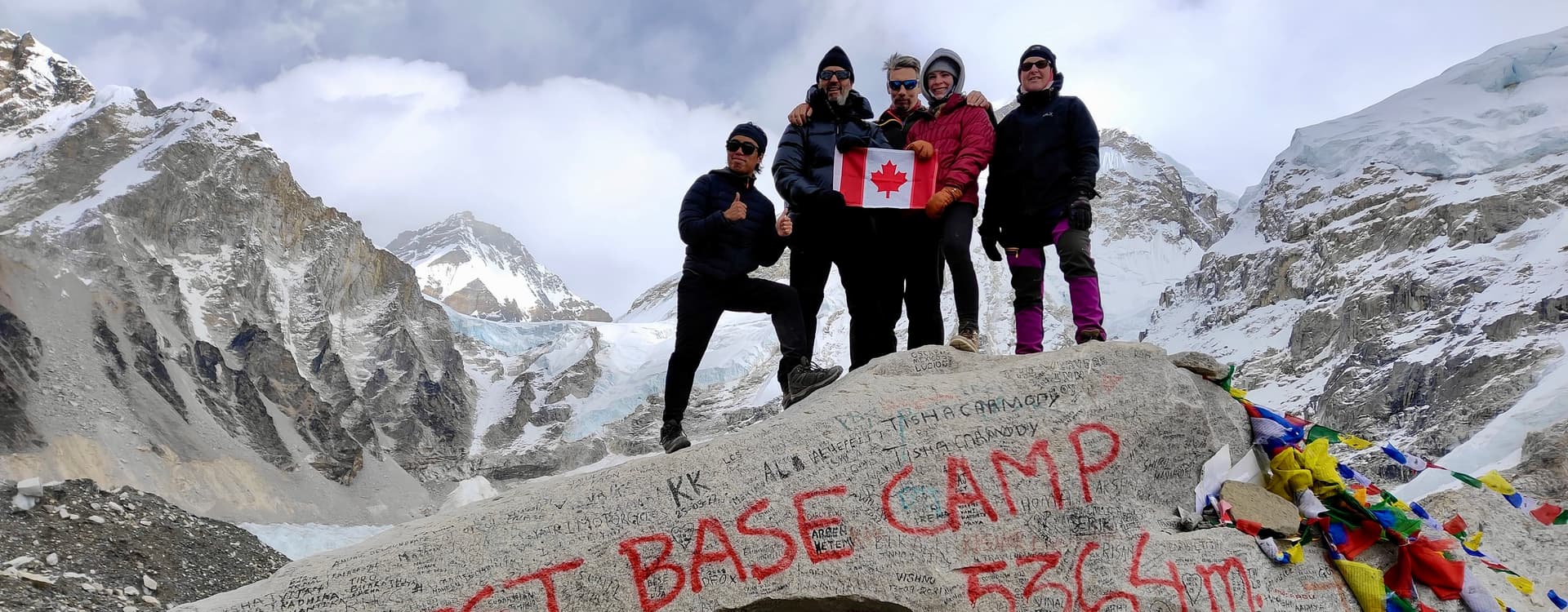You're standing at 12,000 feet, surrounded by snow-capped Himalayan giants, when suddenly it starts pouring rain so hard you can't see five feet ahead. Not exactly the luxury trekking experience you dreamed of, is it?
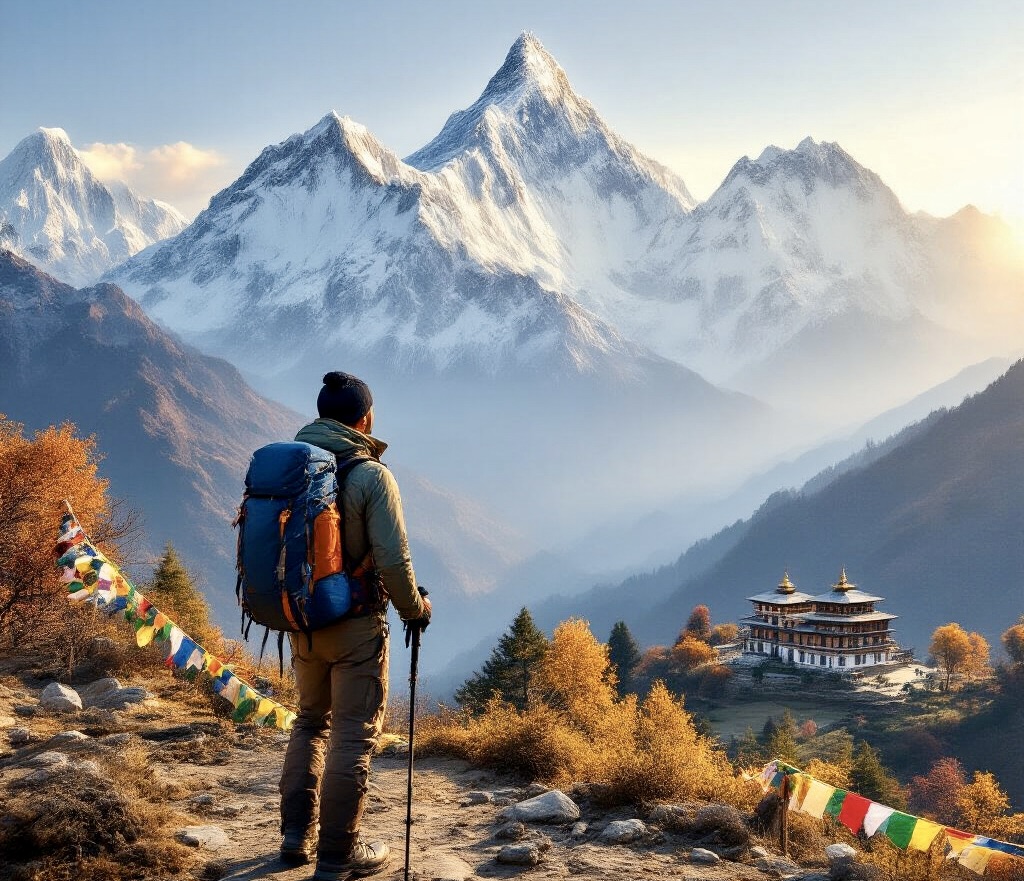
Timing is everything when planning your Nepal adventure. Get it right, and you'll enjoy pristine mountain views and comfortable trekking conditions. Get it wrong, and... well, see above.
I've spent years helping travelers find the best time to visit Nepal for luxury trekking experiences that deliver both comfort and breathtaking scenery. Fall (October-November) offers crystal-clear mountain views, while spring brings spectacular rhododendron blooms across the hillsides.
But there's one specific month that combines perfect weather, fewer crowds, and special cultural experiences most travelers completely miss out on.
Understanding Nepal's Trekking Seasons
Spring Season (March-May): Perfect Bloom and Visibility
Spring brings Nepal to life in ways that luxury trekkers dream about. The rhododendron forests burst into brilliant reds, pinks, and whites, creating a stunning backdrop for your adventure. We've guided countless guests through these vibrant landscapes, and their gasps of wonder never get old.
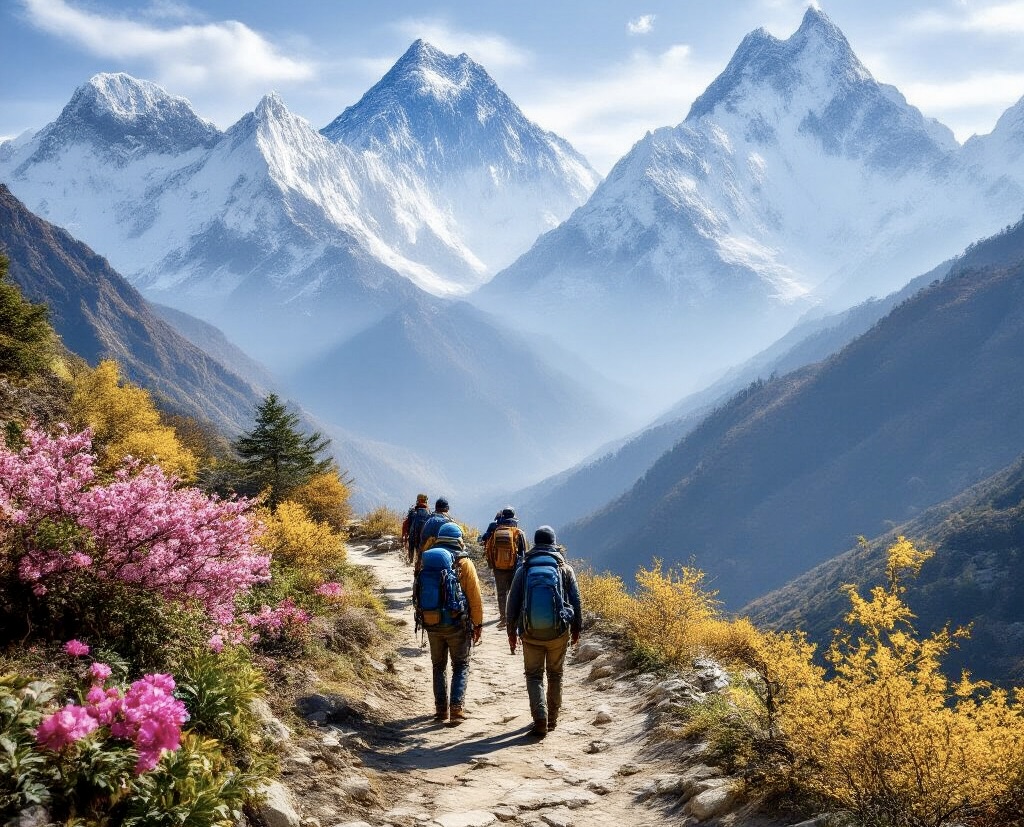
Temperatures during this season hit that sweet spot – warm days averaging 15-20°C in lower elevations and cooler but manageable 5-10°C in higher regions. This means you'll trek in comfort while enjoying crystal-clear mountain views after winter's dust has settled.
Visibility is simply spectacular. Those Instagram-worthy panoramas of snow-capped peaks against blue skies? That's spring in Nepal. And the bonus? You'll beat the autumn crowds while still enjoying premium trail conditions.
Summer/Monsoon Season (June-August): Pros and Challenges
Trekking during monsoon isn't everyone's first choice, but we've discovered some hidden advantages for luxury travelers seeking solitude.
Yes, rain is inevitable – expect downpours mainly in the afternoons and evenings. But mornings often reward early risers with clear views before clouds roll in. The mountains play peek-a-boo, creating mystical scenes as peaks emerge from swirling mists.
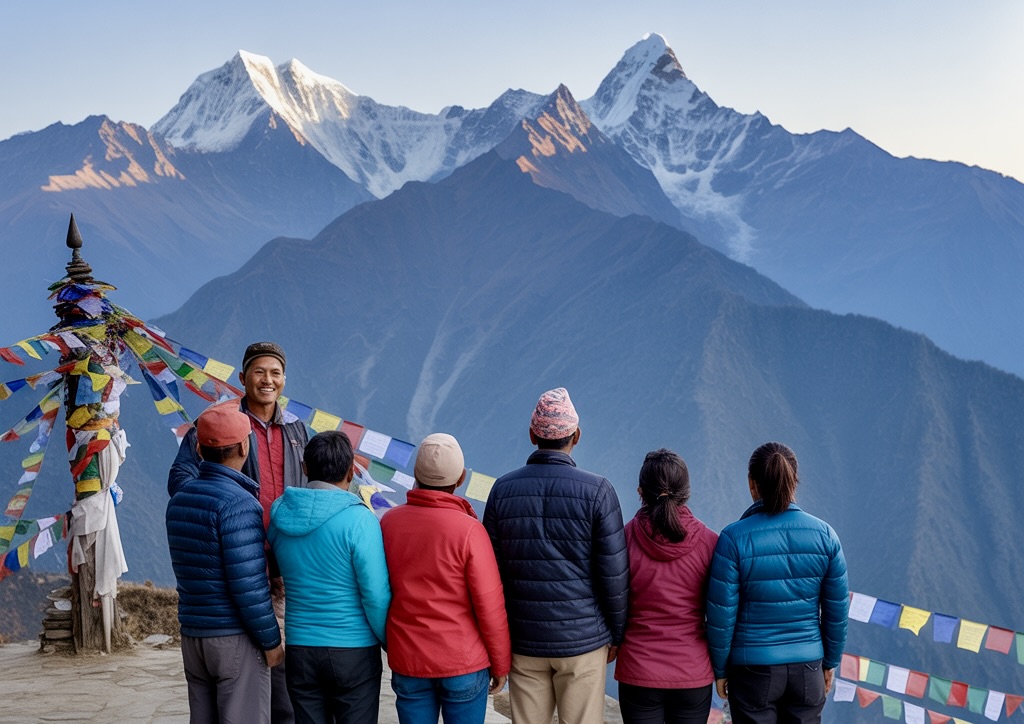
The real magic? Lush greenery everywhere. Terraced fields shine emerald-bright, waterfalls roar with newfound power, and forests feel almost enchanted in their verdant glory.
We always recommend rain-shadow areas like Upper Mustang and Dolpo during this period. These regions receive minimal rainfall thanks to their location behind the Himalayas, offering a dry trekking experience when other trails turn muddy.
Fewer trekkers mean more personalized service at luxury lodges – often with special monsoon rates. Just pack quality waterproof gear and embrace the unique atmosphere of Nepal's green season.
Autumn Season (September-November): Peak Luxury Experience
This is Nepal's trekking showstopper. After monsoon rains wash away summer haze, autumn delivers consistently clear skies and breathtaking visibility. Those mountain views? Simply unmatched.
We consider this the perfect weather package: comfortable daytime temperatures (around 15-20°C at middle elevations), minimal precipitation, and stable conditions that make even challenging passes more accessible.
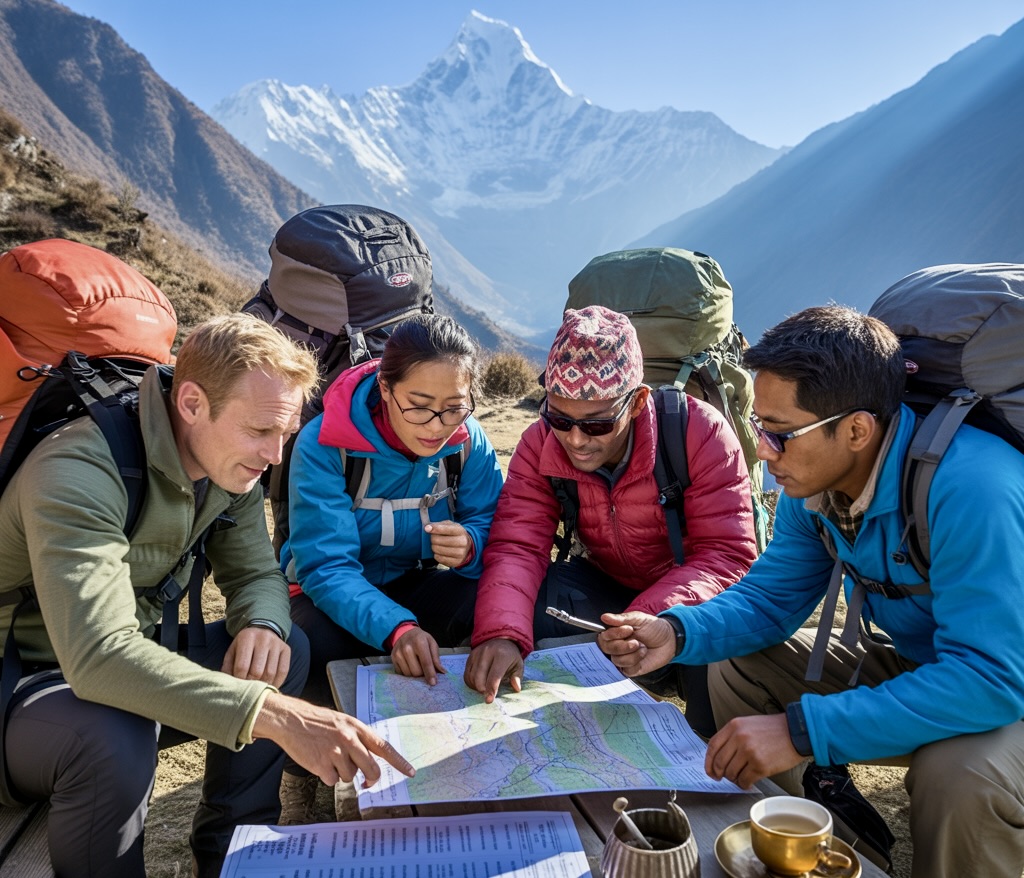
The landscape transforms into a photographer's dream with golden rice fields ready for harvest against the backdrop of snow-white peaks. Cultural bonuses abound too – major festivals like Dashain and Tihar bring vibrant celebrations to villages along trekking routes.
Premium accommodations fill quickly during these months, which is why we secure our clients' bookings well in advance. The popularity is justified – autumn delivers the quintessential Himalayan experience with minimal compromises.
Winter Season (December-February): Serene Solitude and Clear Skies
Winter trekking in Nepal offers something truly special: solitude in the most magnificent mountain landscape on earth.
Temperatures drop significantly (below freezing at higher elevations), but the tradeoff is worth it. The air becomes extraordinarily clear, creating some of the most vivid mountain vistas possible. On sunny days, which are common, the visibility stretches beyond what seems possible.
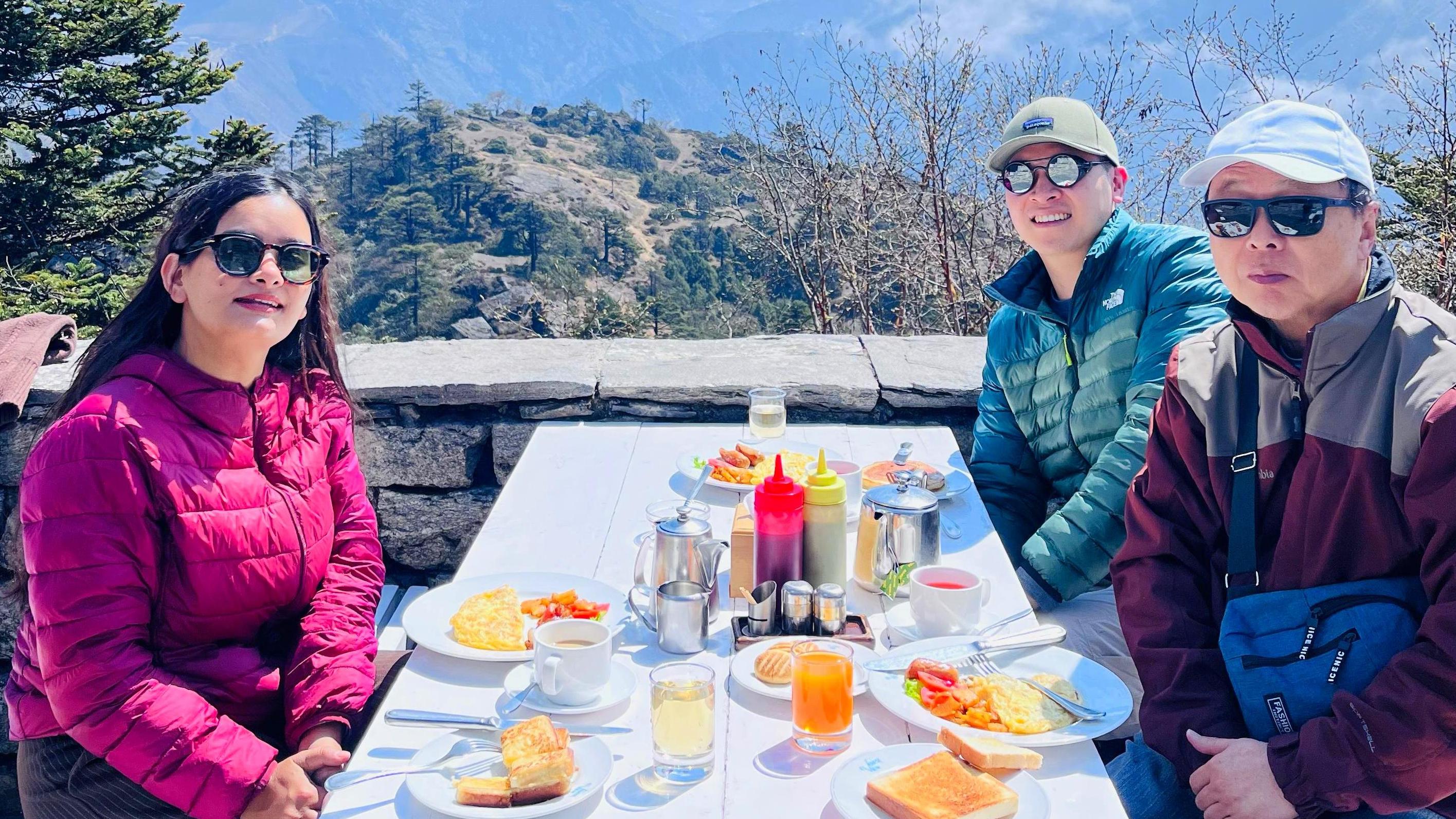
We focus on lower-altitude treks during winter – Annapurna Foothills, Everest View treks, and Langtang Valley remain accessible and comfortable with proper gear. Mountain passes might close with heavy snowfall, but main trails stay open and spectacularly empty.
The cold brings everyone closer to authentic Nepali life – gathering around traditional hearths in teahouses, sipping hot butter tea, and experiencing hospitality that feels more genuine away from peak season crowds.
For photographers, winter light creates magic. The low-angle sunlight bathes mountains in golden hues during extended sunrise and sunset periods that summer trekkers never witness.
Premium Trekking Routes by Season
Everest Base Camp: Optimal Months for Luxury Trekking
We've found that timing is everything when it comes to experiencing Everest Base Camp in luxury. The pre-monsoon months (March to May) offer breathtaking rhododendron blooms and crystal-clear mountain views. During these months, the trails are less crowded than in peak October, and our premium accommodations are more readily available.
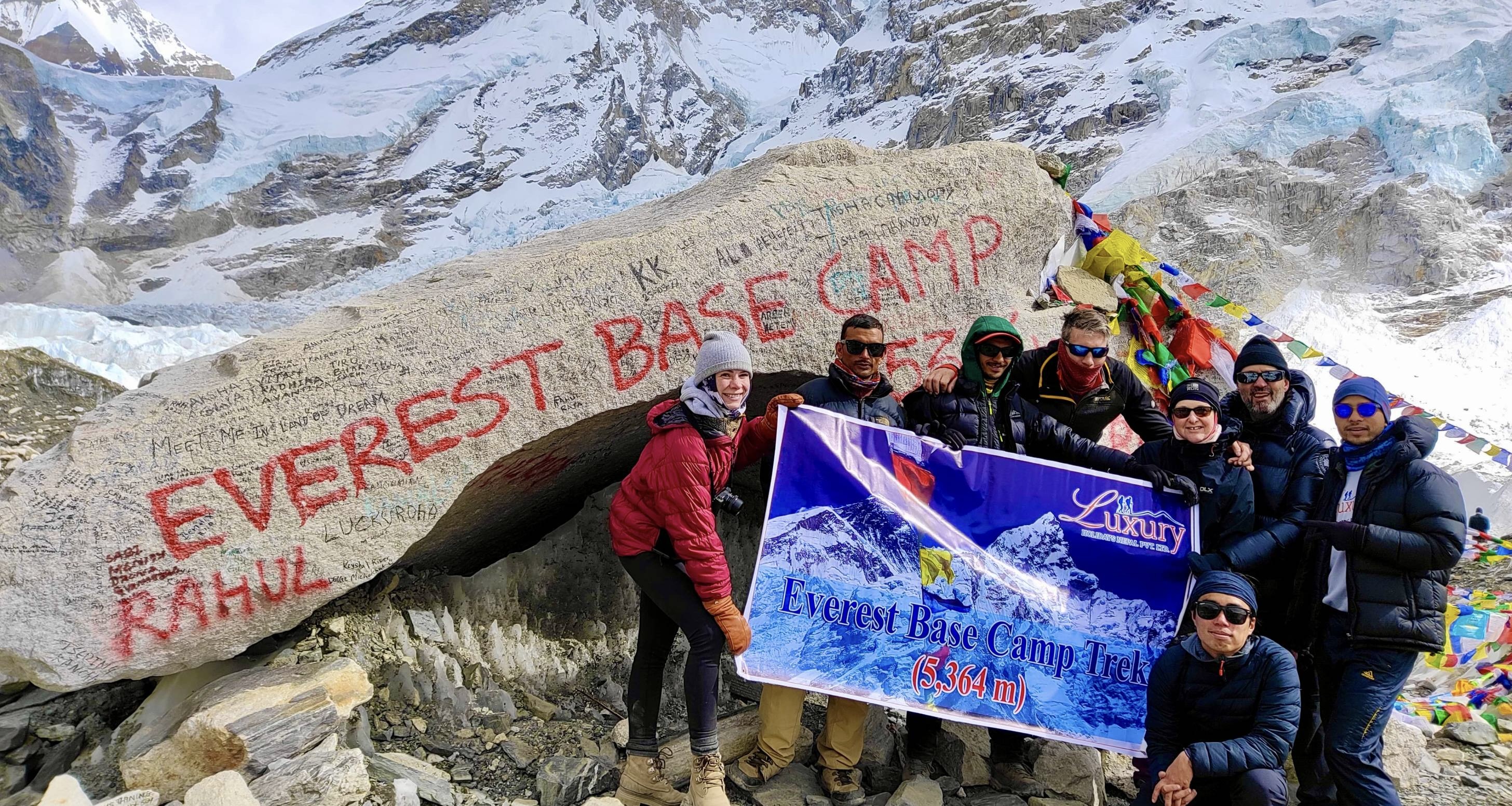
October and November deliver the most reliable weather, with stable conditions perfect for helicopter tours and those Instagram-worthy summit photos. The skies? Absolutely pristine. December through February brings solitude and snow-dusted landscapes for the adventurous luxury traveler who appreciates exclusivity above all else.
Annapurna Circuit: Seasonal Highlights for Discerning Travelers
Our luxury guests on the Annapurna Circuit consistently rave about mid-September to mid-December. The post-monsoon clarity creates a photographer's paradise with the most dramatic mountain backdrops you can imagine.
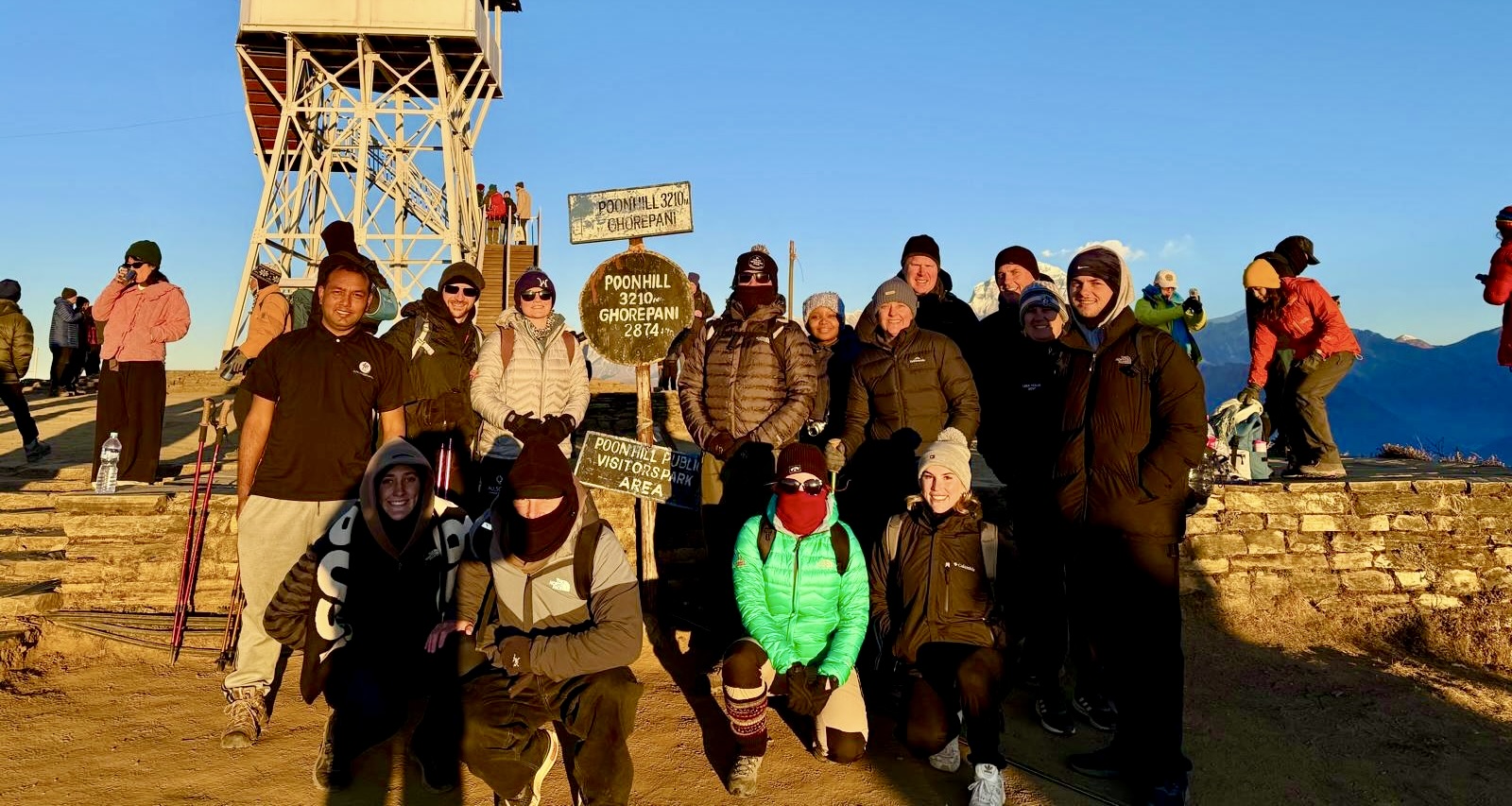
March to May offers warmer temperatures and spectacular wildflower displays that transform the landscape. We've arranged special cultural experiences during April when local festivals add authentic charm to your luxury journey.
Winter trekking (December-February) provides the ultimate exclusive experience – imagine having those majestic viewpoints virtually to yourself, returning to heated lodges with gourmet meals and premium wines.
Upper Mustang: The Best Weather Windows
Upper Mustang shines from June through August – precisely when most Nepal trekking regions battle monsoon rains. We capitalize on this unique weather pattern to offer premium summer trekking when our helicopters and luxury accommodations are less in demand elsewhere.
The landscape transforms dramatically by season:
- April-May: Vibrant green valleys contrasted against stark mountains
- June-August: Perfect blue skies and pleasant temperatures
- September-October: Golden harvests and crystal-clear mountain views
The winter months (December-February) reveal a more austere beauty, with our heated luxury accommodations providing cozy comfort against the elements.
Manaslu Circuit: Exclusive Seasonal Advantages
The Manaslu Circuit reveals its most luxurious potential during October and November. The weather stability allows us to offer guaranteed helicopter services and ensures maximum comfort in our premium accommodations.
Spring (March-May) brings rhododendron forests in spectacular bloom – we've timed our luxury itineraries to coincide with the peak flowering periods, creating unforgettable visual experiences for our guests.
The monsoon months make this route challenging, but for those seeking true exclusivity, we offer specially designed September departures that catch the first post-monsoon clarity before the main tourist rush.
Langtang Valley: Seasonal Luxury Appeal
Langtang's proximity to Kathmandu makes it our favorite for short luxury treks, with each season offering distinct advantages. October and November provide reliable weather, perfect for our helicopter tours and luxury picnics against snow-capped backdrops.
March through May transforms the valley with blooming rhododendrons and magnolias. We've designed special photography-focused luxury itineraries during these months.
Winter (December-February) offers a more contemplative experience with fewer trekkers and pristine snow views. Our heated luxury lodges with panoramic windows allow you to enjoy the winter wonderland in perfect comfort.
Luxury Accommodations and Services
Five-Star Mountain Lodges and Their Peak Seasons
The world of luxury trekking in Nepal has evolved dramatically. Gone are the days when trekking meant roughing it in basic teahouses. We've carefully curated partnerships with the finest mountain lodges across Nepal's iconic trekking routes.
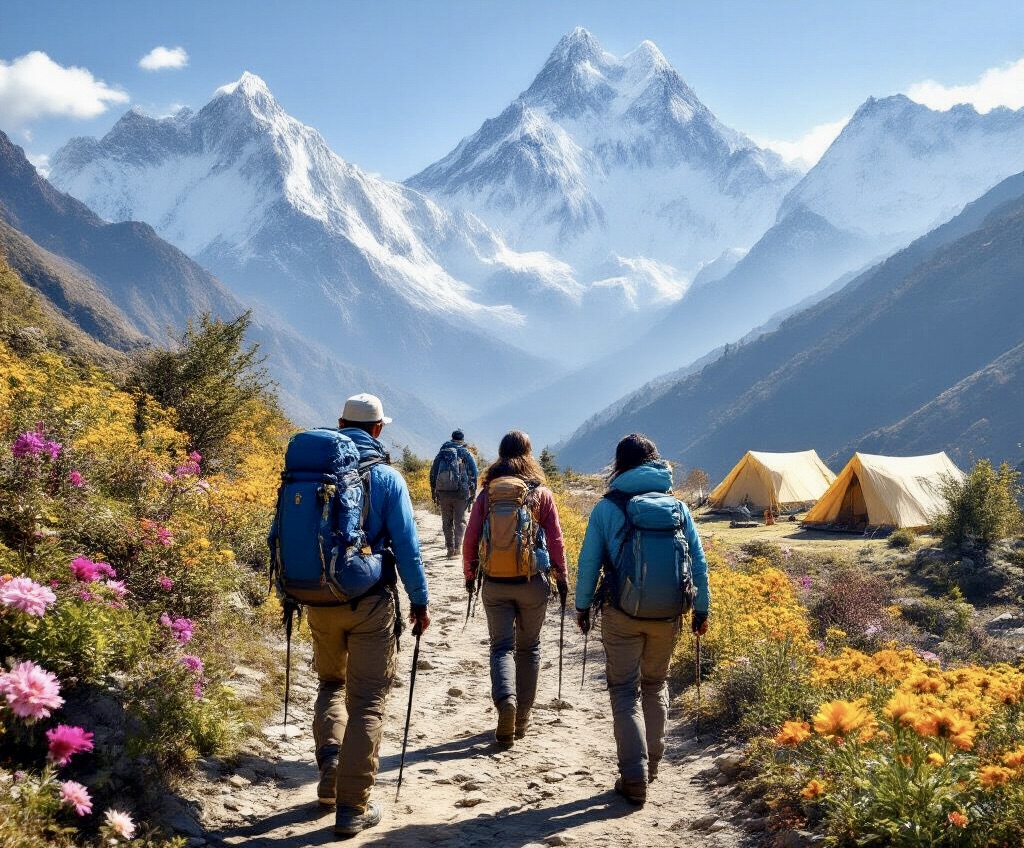
Spring (March-May) offers the perfect blend for luxury accommodation experiences. The Everest region's premium lodges like Mountain Lodges of Nepal and Everest View Hotel book up months in advance during this period. We've seen trekkers miss out simply because they waited too long to secure their spot.
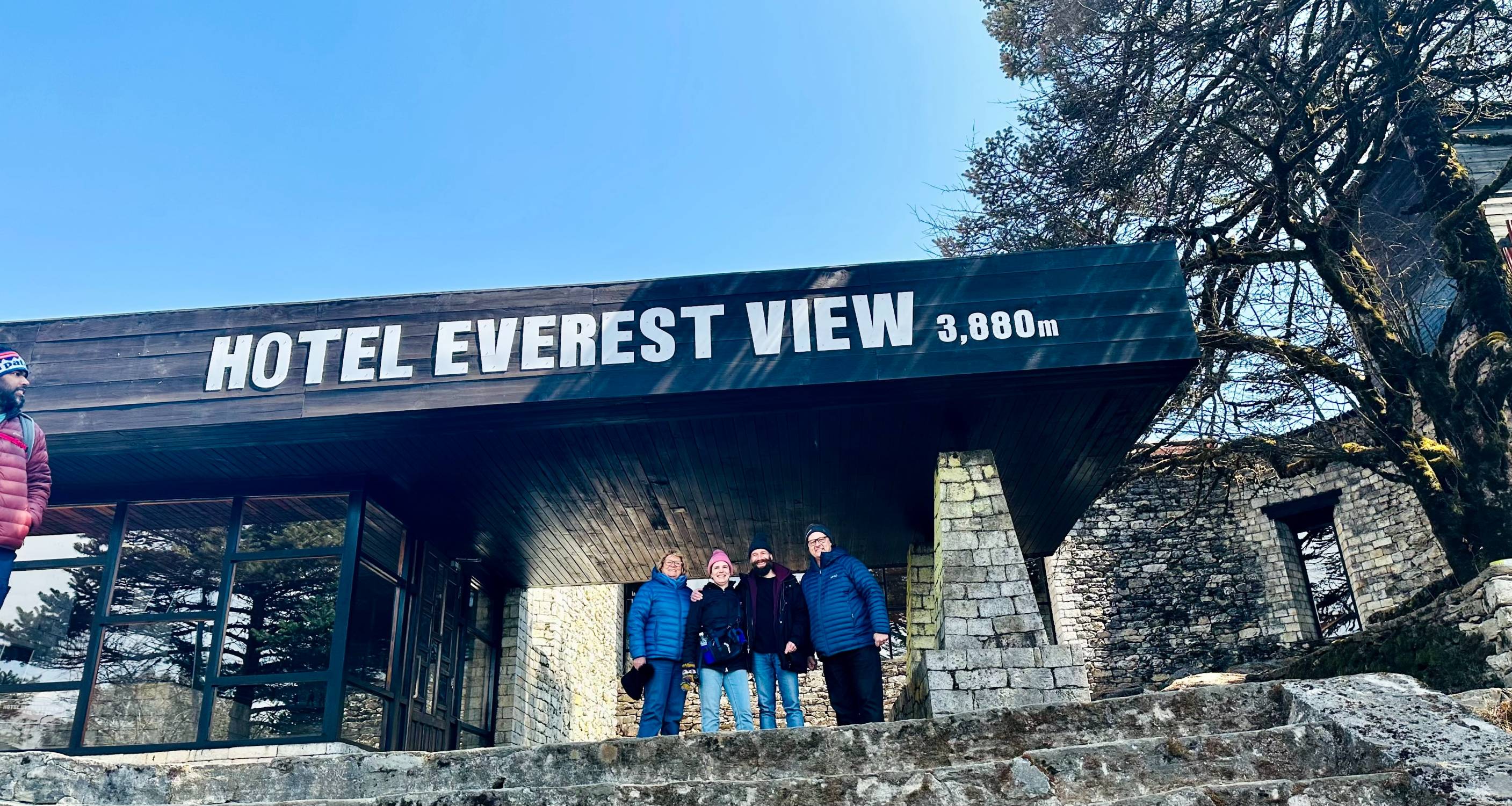
Fall (September-November) brings crystal-clear mountain views and comfortable temperatures, making it another prime time for luxury lodges. During these peak seasons, our clients enjoy heated rooms, gourmet dining, and hot showers after exhilarating day hikes.
The monsoon season (June-August) and winter (December-February) offer surprising advantages too. Many luxury properties offer significant discounts, and you'll often have these stunning accommodations nearly to yourself. Winter brings its own charm with snow-capped peaks and cozy fireside evenings in lodges.
Seasonal Availability of Premium Guides and Porters
Securing the best guides can make or break your luxury trekking experience. We work with an elite team of guides who speak multiple languages, hold advanced first-aid certifications, and possess encyclopedic knowledge of local culture and terrain.
During peak seasons (spring and fall), these premium guides are in extraordinarily high demand. We recommend booking at least 6-8 months in advance to secure our most experienced team members. Many of our returning clients book their preferred guides a full year ahead.
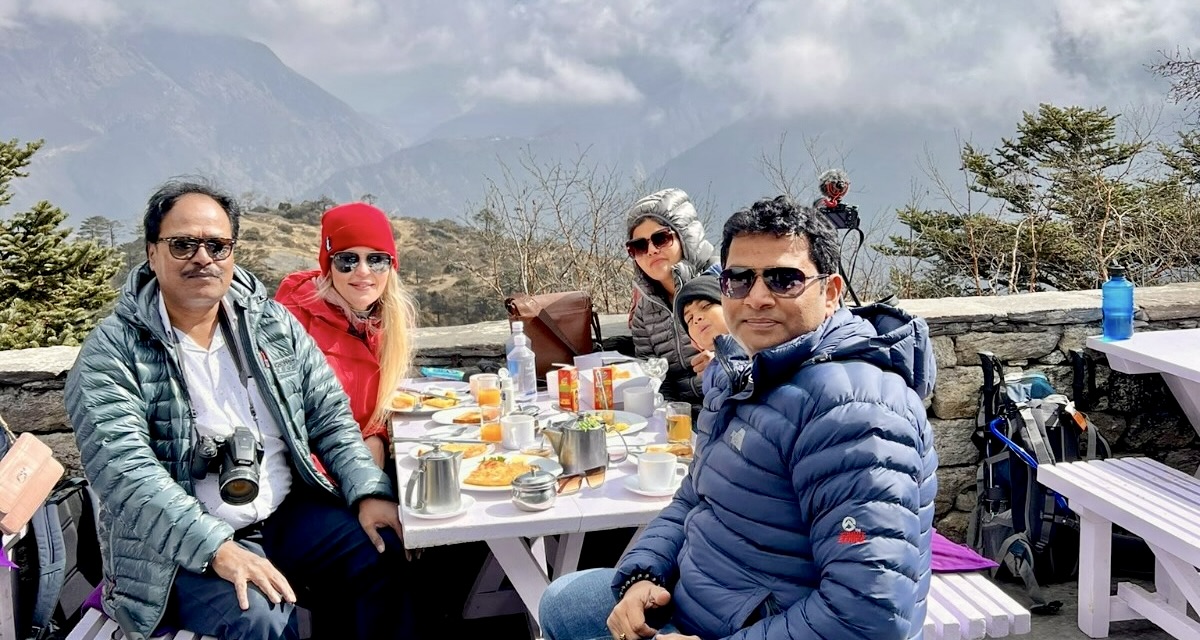
The shoulder seasons offer unique advantages. Between November-December and February-March, our most accomplished guides are more readily available. This means more personalized attention and flexibility in customizing your journey.
Our premium porter service maintains consistent standards year-round, though we increase compensation during challenging weather periods to ensure your comfort never wavers.
Helicopter Services and Weather Dependencies
Helicopter services have revolutionized luxury trekking in Nepal. We arrange everything from dramatic aerial tours to time-saving transfers between destinations.
Weather dictates helicopter operations more than any other factor. Morning flights (6-10 AM) offer the highest reliability year-round, with afternoon conditions often deteriorating, especially during monsoon months.
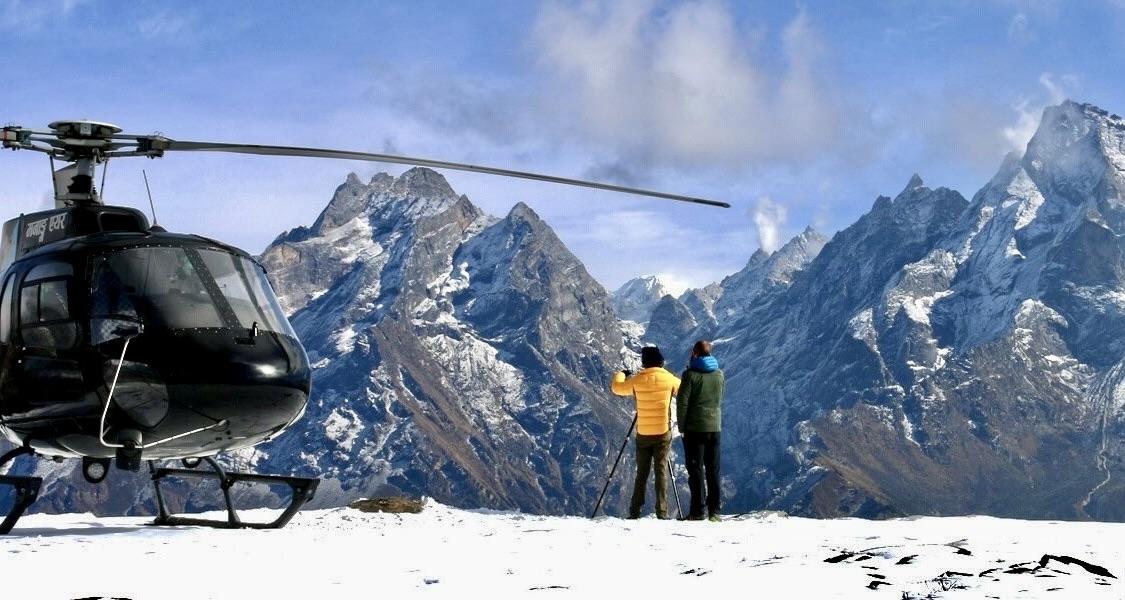
October and November provide the most reliable conditions for helicopter services, with over 90% of scheduled flights operating without weather delays. March and April follow closely behind with approximately 85% reliability.
During monsoon season (June-August), helicopter availability becomes significantly limited, often with only early morning windows available. We build flexible itineraries during these months, incorporating buffer days to accommodate potential weather delays.
December through February brings its own challenges with high winds at higher elevations, though clear days offer spectacular flying conditions and unmatched mountain views.
Cultural Experiences and Festivals
Major Nepalese Festivals Worth Planning Around
The festival calendar in Nepal offers some of the most authentic cultural experiences you'll find anywhere. We recommend timing your luxury trek around Dashain (September-October), Nepal's biggest festival, when families reunite and vibrant celebrations fill the streets. During this 15-day celebration, we can arrange special viewpoints for you to witness the traditional ceremonies.
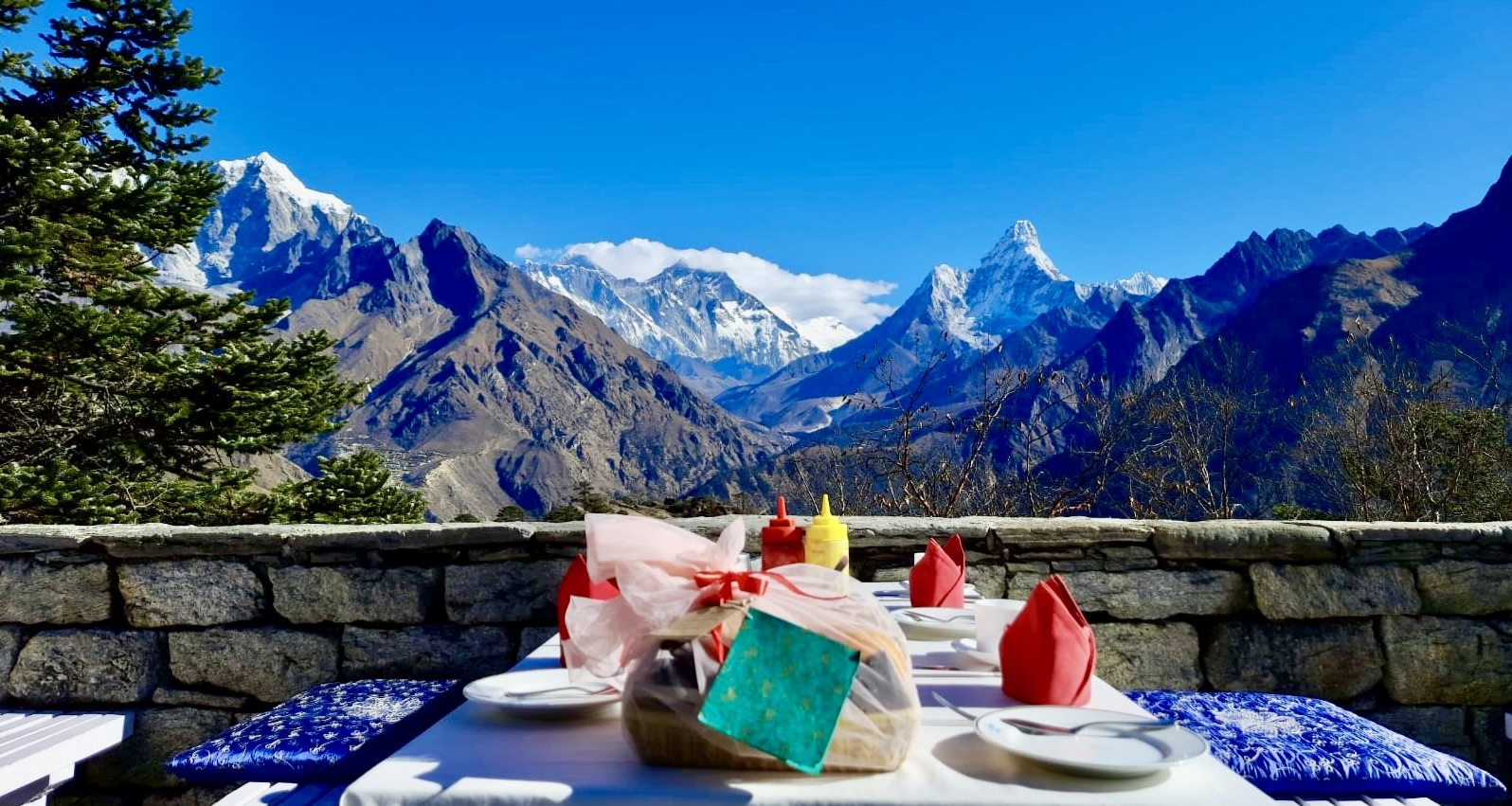
Tihar, the festival of lights following Dashain, transforms Nepal into a glittering wonderland. Our guests particularly enjoy the Lakshmi Puja night when homes and streets glow with oil lamps and candles.
For those visiting in spring, Holi is an explosion of colors you shouldn't miss. We provide our luxury trekkers with protected viewing areas where you can photograph the festivities without getting doused in colors (unless you want to join in!).
Seasonal Cultural Immersion Opportunities
Each season in Nepal unlocks different cultural doors. Winter brings intimate tea house experiences in the mountains, where we arrange fireside chats with local elders who share stories passed down through generations.
Spring offers perfect opportunities to witness traditional farming practices. We can organize private visits to local homes where you'll learn authentic cooking techniques using freshly harvested ingredients.
The summer monsoon season, while less popular for trekking, provides remarkable cultural immersion as communities perform ancient rain rituals. We've developed exclusive indoor cultural programs during these months featuring traditional music and dance performances.
Exclusive Access to Monasteries and Heritage Sites
We've cultivated relationships with monastery keepers and cultural guardians throughout Nepal, allowing our guests privileged access beyond standard tourist experiences. Our connections enable private meditation sessions with Buddhist monks in ancient monasteries and special permission to witness sacred ceremonies typically closed to outsiders.
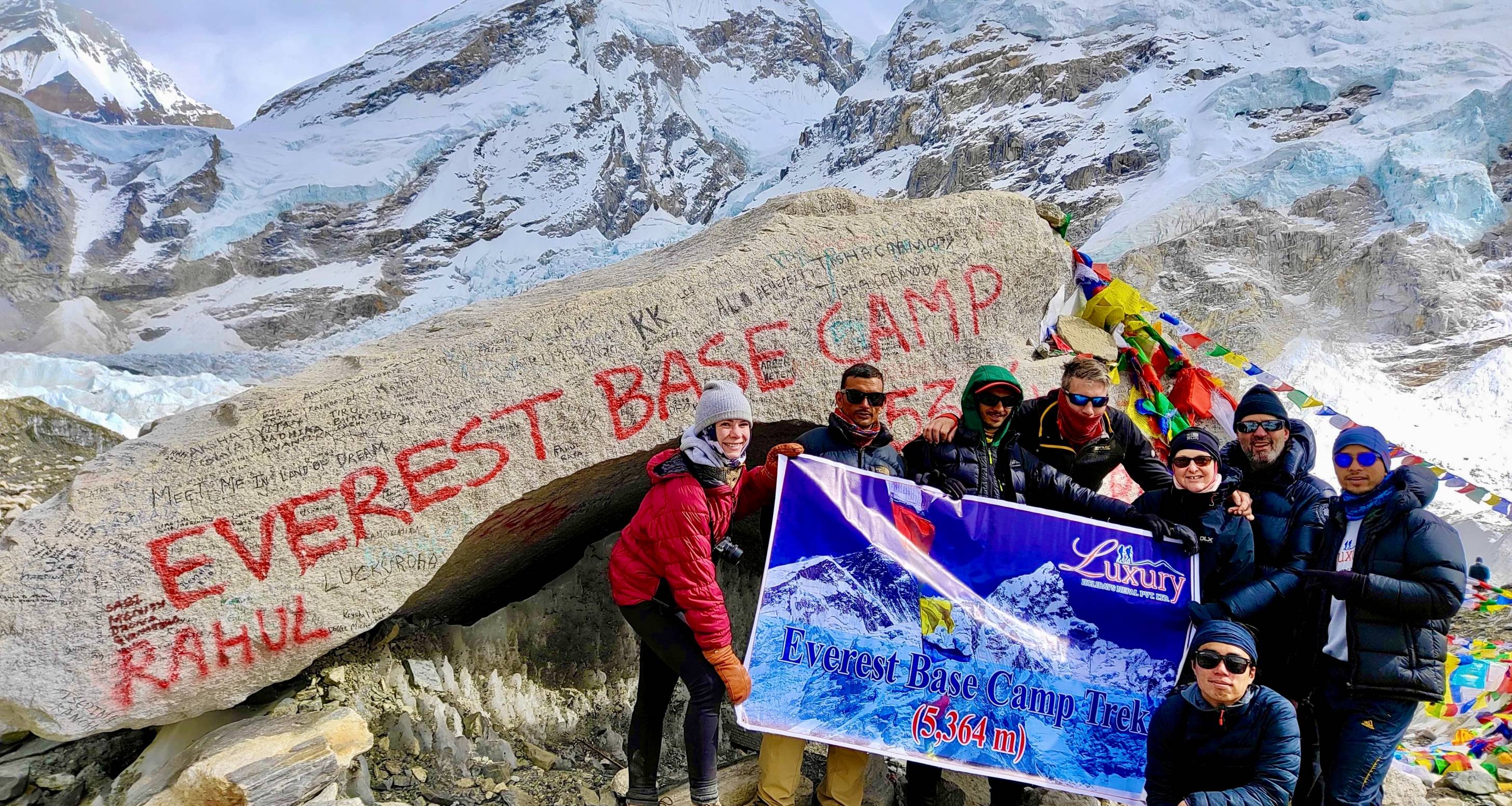
In Kathmandu Valley, we arrange early morning visits to UNESCO World Heritage sites before they open to the public. Imagine experiencing Bhaktapur's ancient courtyards in the golden morning light with a respected local historian as your private guide.
For those seeking deeper spiritual experiences, we can coordinate overnight stays in selected monasteries, where you'll join monks for morning prayers and gain insights into their contemplative lifestyle. These rare opportunities transform a luxury trek into a profound cultural journey.
Practical Considerations for Luxury Trekkers
Premium Gear Recommendations by Season
Trekking in Nepal demands different gear depending on when you visit. During spring (March-May), we pack lightweight, breathable clothing with layers for temperature fluctuations. Our luxury clients love high-end merino wool base layers from brands like Icebreaker or Smartwool—perfect for those crisp mornings that warm into pleasant afternoons.
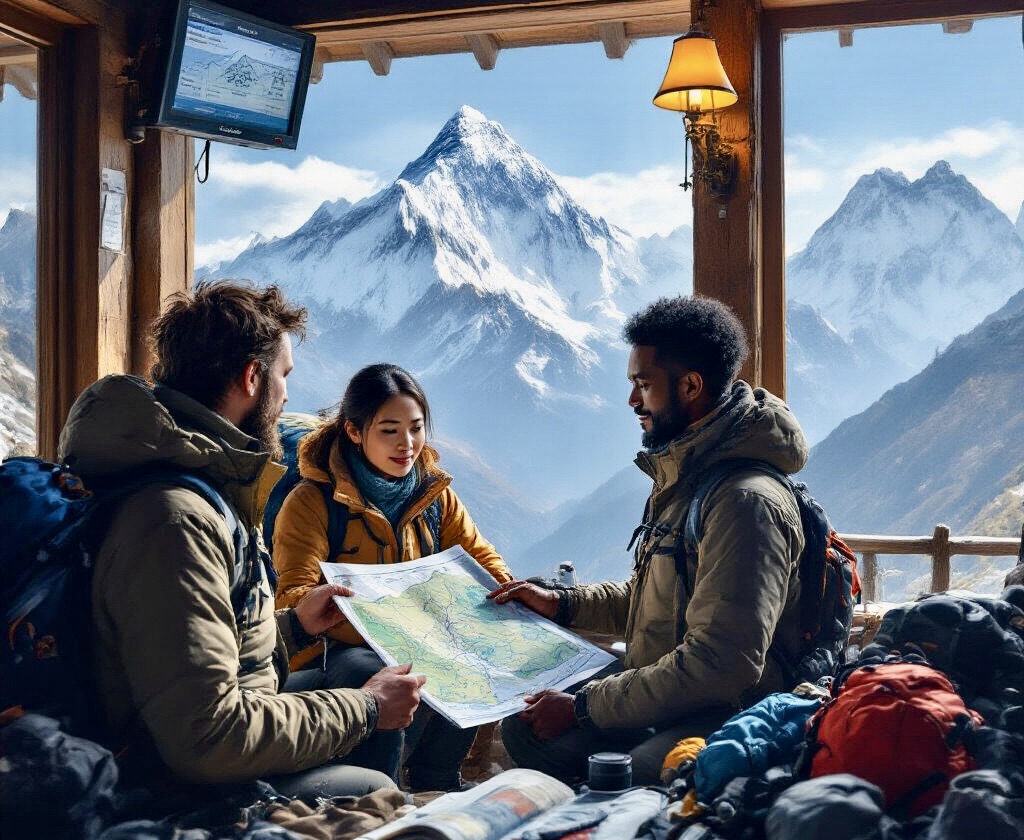
For the monsoon season (June-August), waterproofing is non-negotiable. We recommend Arc'teryx or Patagonia Gore-Tex jackets and pants. Quick-dry hiking pants from Fjällräven have served our trekkers exceptionally well when navigating muddy trails.
Fall trekkers (September-November) need versatile mid-layers. The Patagonia Nano Puff or Mountain Hardwear Ghost Whisperer down jackets offer premium warmth without the bulk when temperatures drop in higher elevations.
Winter adventurers (December-February) require serious cold-weather gear. Our guides swear by Canada Goose or Marmot expedition-weight down parkas, plus heavyweight merino base layers and premium insulated hiking boots like La Sportiva Nepal Cube GTX.
Year-round essentials include:
|
Item |
Recommended Brand |
Why We Love It |
|
Trekking Poles |
Black Diamond Alpine Carbon Cork |
Absorbs impact on steep descents |
|
Backpack |
Osprey Atmos/Aura AG |
Superior weight distribution |
|
Boots |
Scarpa Zodiac Plus GTX |
Exceptional ankle support |
|
Socks |
Darn Tough |
Lifetime warranty, blister prevention |
Health and Altitude Considerations Throughout the Year
Altitude affects trekkers differently throughout Nepal's seasons. Spring brings stable conditions, making acclimatization more predictable. We schedule our luxury treks with strategically placed rest days at 3,000m and 4,000m elevations, allowing your body to adjust while enjoying premium teahouse amenities.
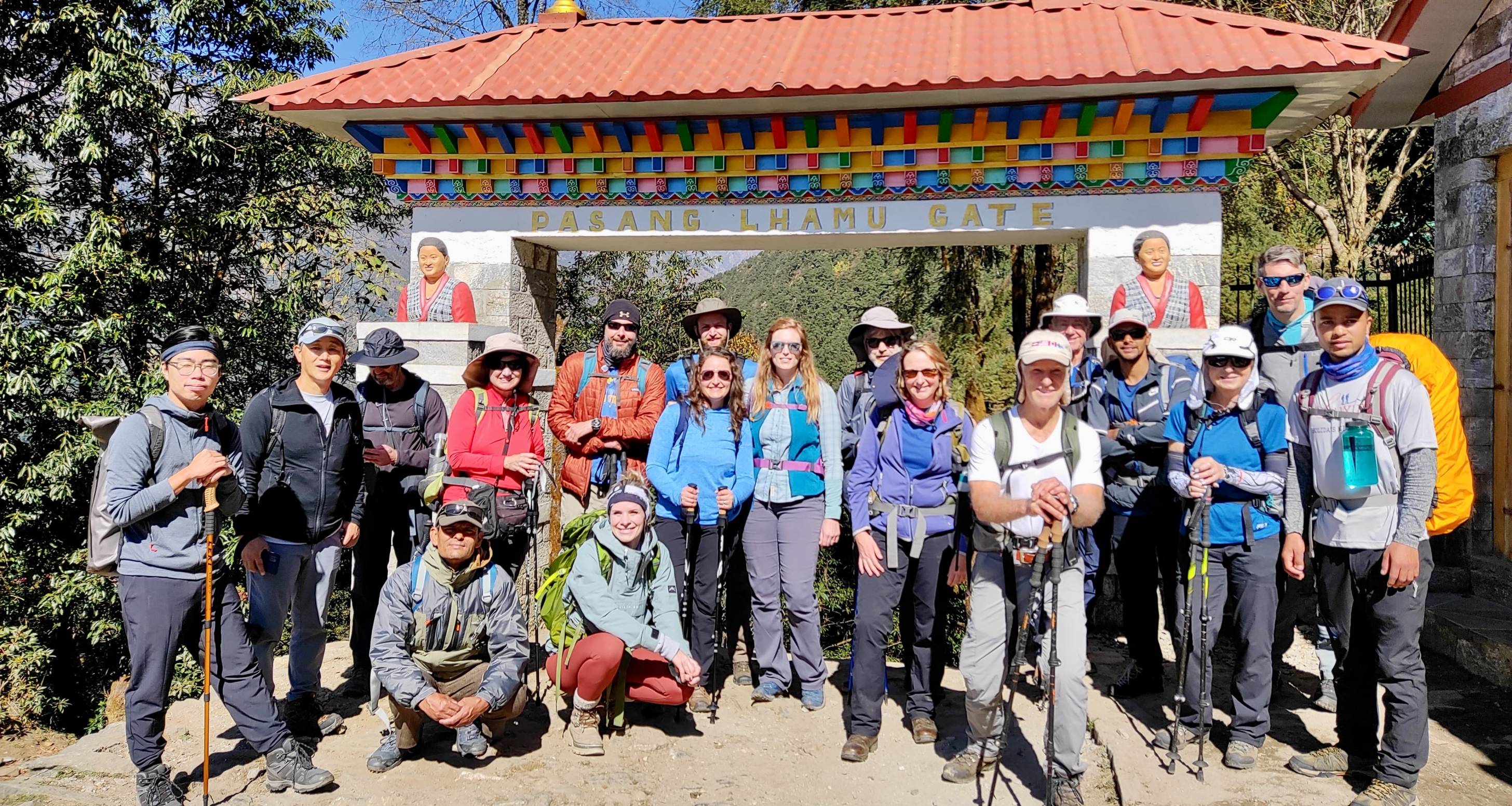
Fall offers the cleanest air post-monsoon, which many of our clients find helps with breathing at higher altitudes. Winter trekking requires extra caution—cold air contains less oxygen, potentially intensifying altitude symptoms. Our guides carry portable oxygen and pulse oximeters year-round.
Pre-trek preparation matters regardless of season. We recommend starting Diamox (acetazolamide) 24 hours before ascending above 3,000m, after consulting your physician. Our luxury packages include private consultations with altitude specialists before departure.
Staying hydrated is crucial—we provide purified water throughout the journey. During warmer months, we suggest 4-5 liters daily; in winter, 3-4 liters despite feeling less thirsty.
Some seasonal health considerations:
- Spring: Pollen allergies can compound breathing issues
- Monsoon: Increased risk of waterborne illness (our premium filtration systems mitigate this)
- Fall: Drier air may cause nasal dryness (we supply saline sprays)
- Winter: Cold-induced asthma can worsen (we recommend appropriate medications)
Photography Opportunities: Seasonal Lighting and Landscapes
Nepal offers distinct photographic opportunities each season. Spring bathes the Himalayas in crystal clear morning light—perfect for those panoramic mountain shots. The rhododendron forests explode with color, creating stunning foreground elements against snow-capped peaks. We position our luxury camps to capture the pink alpenglow on Everest and Annapurna at sunrise.
Monsoon might seem challenging, but cloud breaks create dramatic lighting conditions. The lush, vibrant green terraced fields make for spectacular environmental portraits. We've found the best shooting times are early morning before daily clouds form.
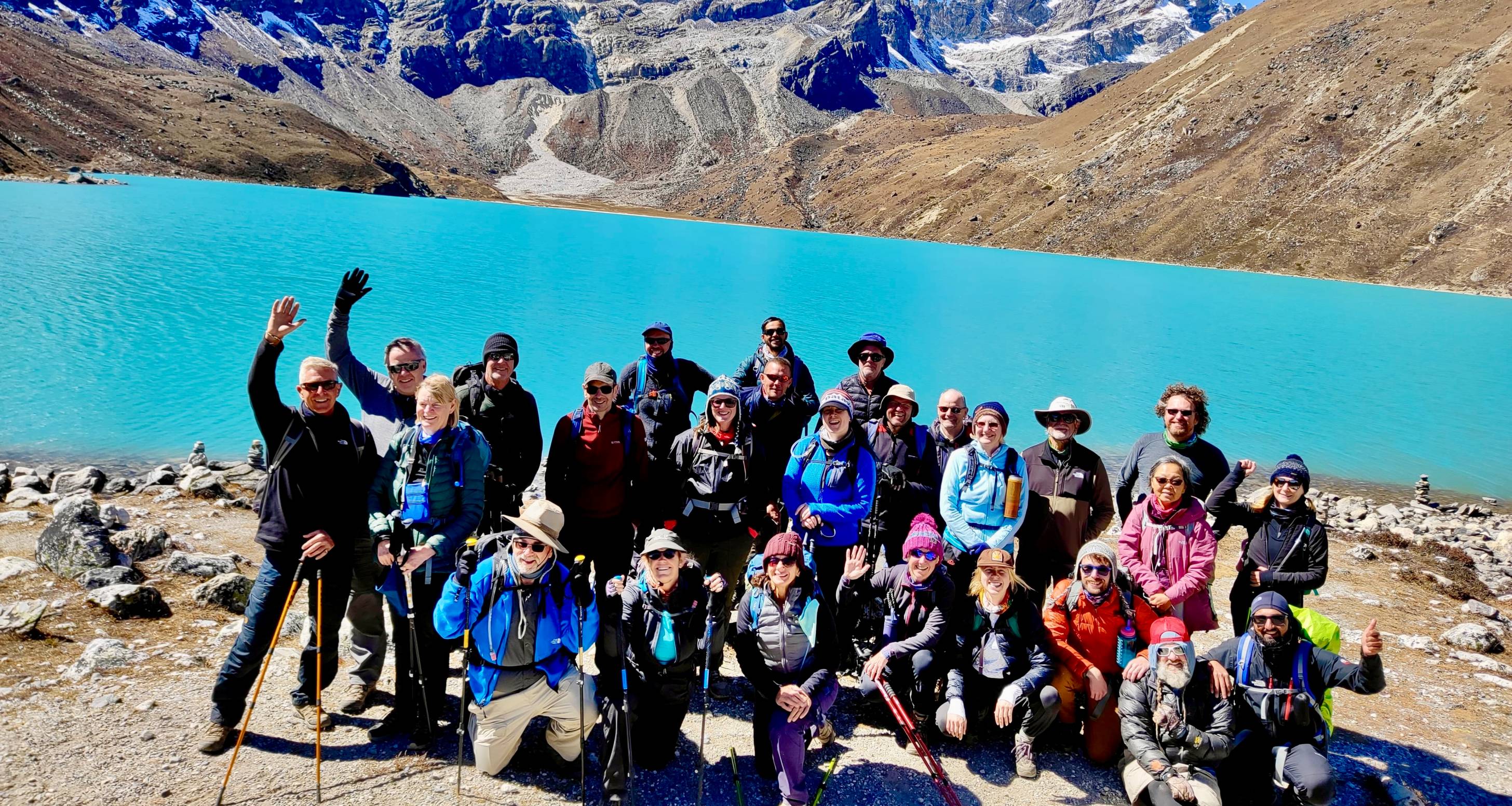
Fall delivers the photographer's holy grail—crisp air quality with extraordinary visibility. The golden hour extends longer, offering that perfect warm light on the mountains. The contrast between golden barley fields and white peaks creates depth in landscape compositions our clients treasure forever.
Winter photography in Nepal is all about drama. Snow-dusted villages against piercing blue skies create postcard-perfect scenes. The lower angle of winter sunlight casts longer shadows, adding dimension to mountain photography. Our guides know the precise locations to capture sunsets that bathe the Himalayas in otherworldly orange and purple hues.
Pro tip: Each season benefits from different filters:
- Spring: Polarizing filters to enhance those blue skies
- Monsoon: ND filters for dramatic waterfall long exposures
- Fall: Graduated ND filters to balance bright peaks with darker valleys
- Winter: Warming filters to counter the blue cast in snow scenes
Booking Windows for Securing Elite Services
The demand for truly luxurious accommodations on Nepal's trekking routes has skyrocketed. For peak seasons (spring and fall), we strongly recommend booking 9-12 months in advance. This isn't just about securing rooms—it's about getting the most experienced guides, preferred helicopter transfer times, and custom itinerary adjustments.
The premium lodges along the Everest and Annapurna circuits fill their luxury suites first, often 8+ months ahead for October-November dates. The exclusive Mountain Lodges of Nepal properties and Ker & Downey lodges operate at capacity during prime seasons.
For last-minute luxury trekkers, we've found winter (December-February) offers more flexibility, with booking windows as short as 2-3 months. The monsoon season also provides opportunities for securing elite services with shorter notice, though we'll need time to arrange additional comforts for wet-weather trekking.
Our VIP clients appreciate our priority booking system:
|
Season |
Recommended Booking Window |
Flexibility Factor |
|
Spring |
9-12 months ahead |
Low flexibility |
|
Monsoon |
3-6 months ahead |
High flexibility |
|
Fall |
10-14 months ahead |
Very low flexibility |
|
Winter |
4-8 months ahead |
Moderate flexibility |
The most exclusive experiences—private helicopter tours, celebrity guides, custom-catered meals at high camps—require the longest lead times. We've developed relationships with Nepal's premium service providers, but even we need adequate time to choreograph truly seamless luxury experiences in these remote mountain settings.
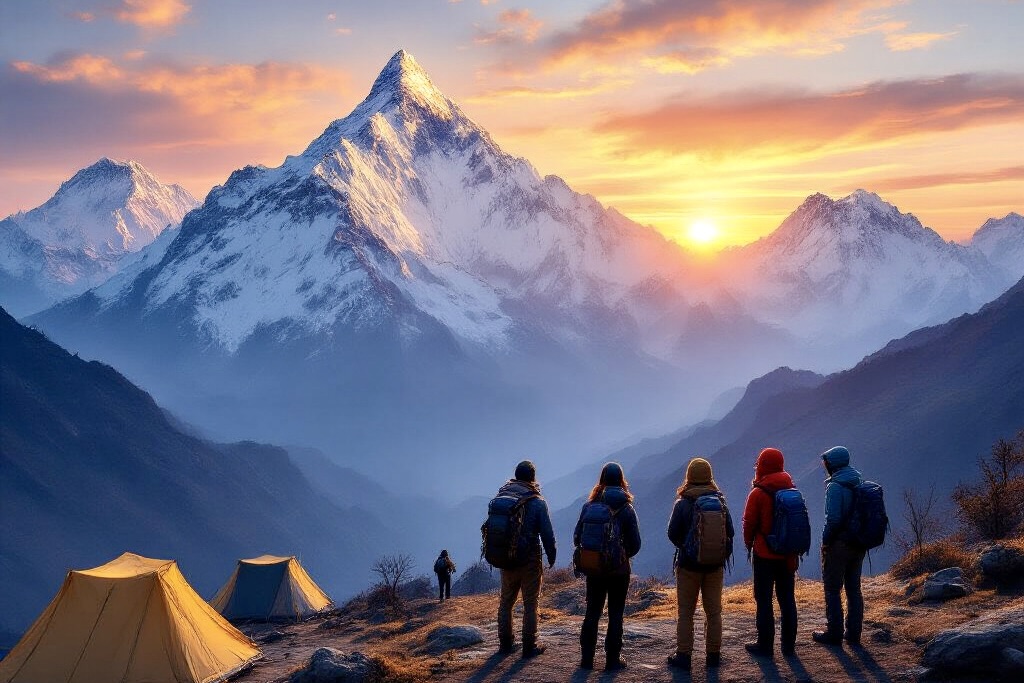
Planning a luxury trekking adventure in Nepal requires careful timing to maximize both comfort and experience. Spring (March-May) offers vibrant rhododendron blooms and crystal-clear mountain views, while autumn (September-November) provides stable weather and festive cultural celebrations. Each season unlocks unique experiences on premium routes like Everest Base Camp and the Annapurna Circuit, complemented by world-class luxury lodges and personalized services.
Your perfect Nepalese trekking journey awaits with Luxury Holidays Nepal. Whether you seek cultural immersion during festival seasons or serene wilderness experiences in the off-peak months, our expert guides and customized itineraries ensure an unforgettable adventure.
Contact us today to plan your luxury Himalayan expedition tailored to the ideal season for your preferences and aspirations.
If you need any further information, please contact us by email: [email protected], Phone: +977- 985 100 5129 (WhatsApp)

